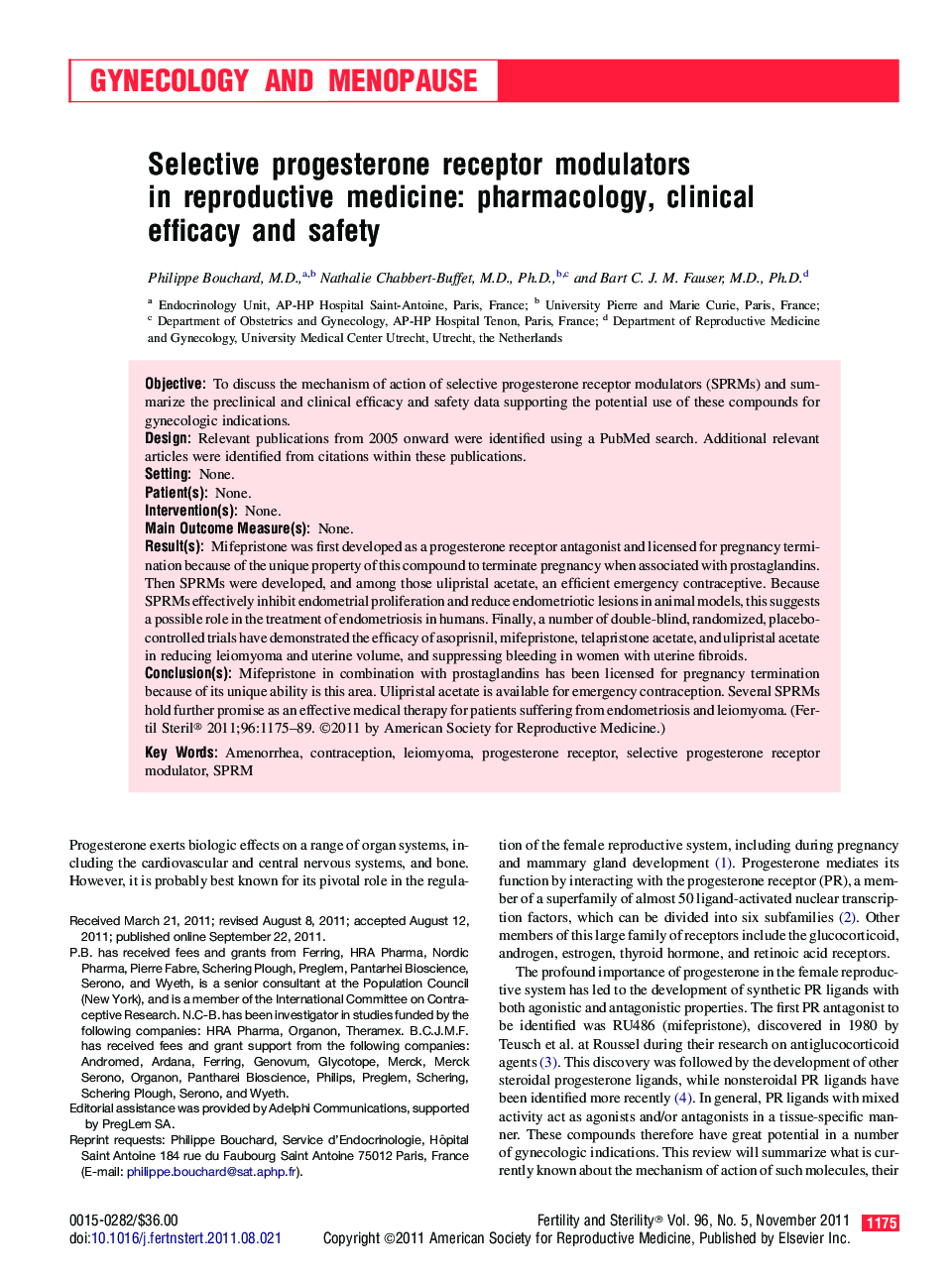| Article ID | Journal | Published Year | Pages | File Type |
|---|---|---|---|---|
| 3935745 | Fertility and Sterility | 2011 | 15 Pages |
ObjectiveTo discuss the mechanism of action of selective progesterone receptor modulators (SPRMs) and summarize the preclinical and clinical efficacy and safety data supporting the potential use of these compounds for gynecologic indications.DesignRelevant publications from 2005 onward were identified using a PubMed search. Additional relevant articles were identified from citations within these publications.SettingNone.Patient(s)None.Intervention(s)None.Main Outcome Measure(s)None.Result(s)Mifepristone was first developed as a progesterone receptor antagonist and licensed for pregnancy termination because of the unique property of this compound to terminate pregnancy when associated with prostaglandins. Then SPRMs were developed, and among those ulipristal acetate, an efficient emergency contraceptive. Because SPRMs effectively inhibit endometrial proliferation and reduce endometriotic lesions in animal models, this suggests a possible role in the treatment of endometriosis in humans. Finally, a number of double-blind, randomized, placebo-controlled trials have demonstrated the efficacy of asoprisnil, mifepristone, telapristone acetate, and ulipristal acetate in reducing leiomyoma and uterine volume, and suppressing bleeding in women with uterine fibroids.Conclusion(s)Mifepristone in combination with prostaglandins has been licensed for pregnancy termination because of its unique ability is this area. Ulipristal acetate is available for emergency contraception. Several SPRMs hold further promise as an effective medical therapy for patients suffering from endometriosis and leiomyoma.
